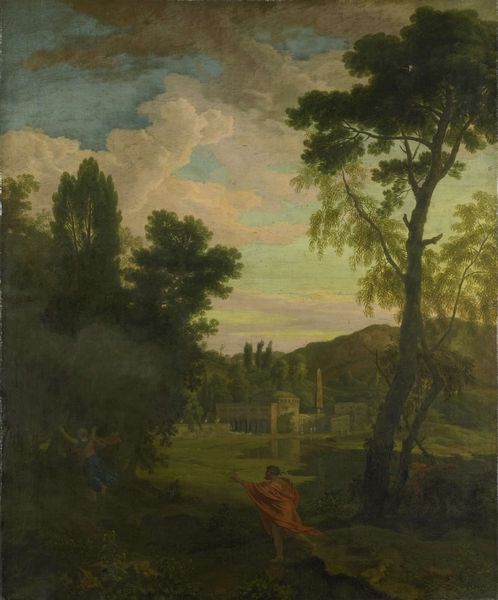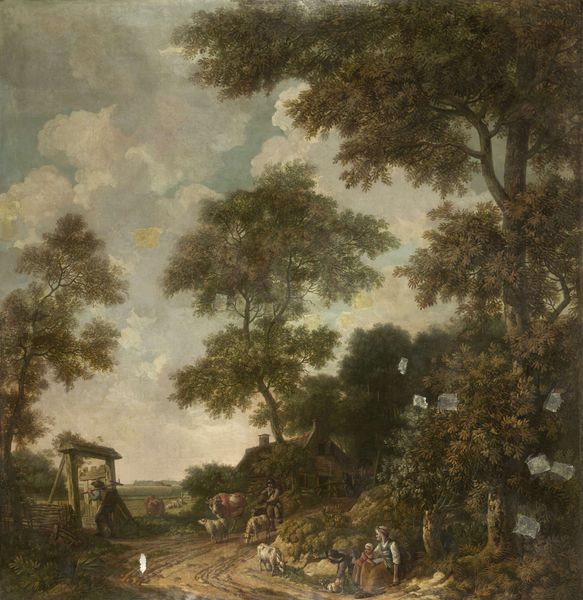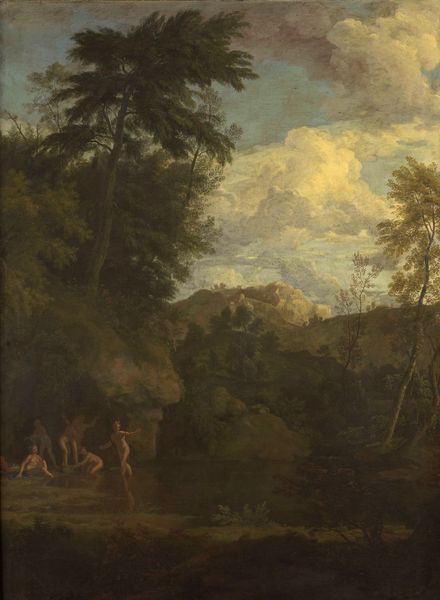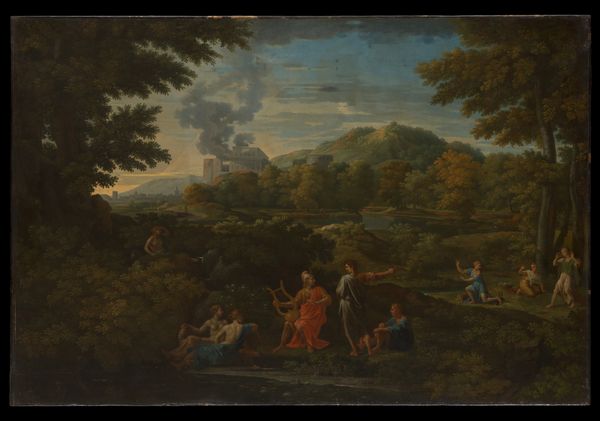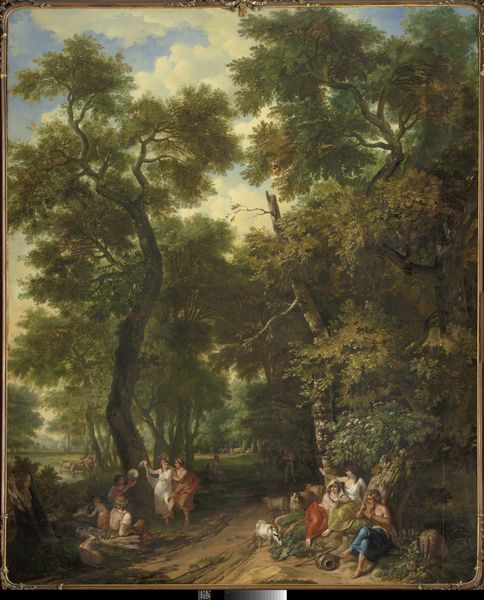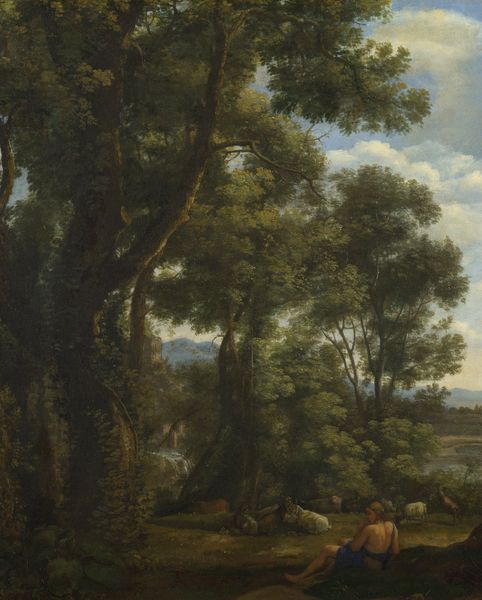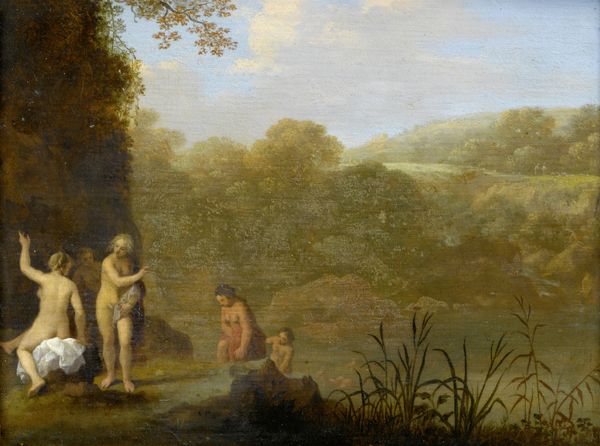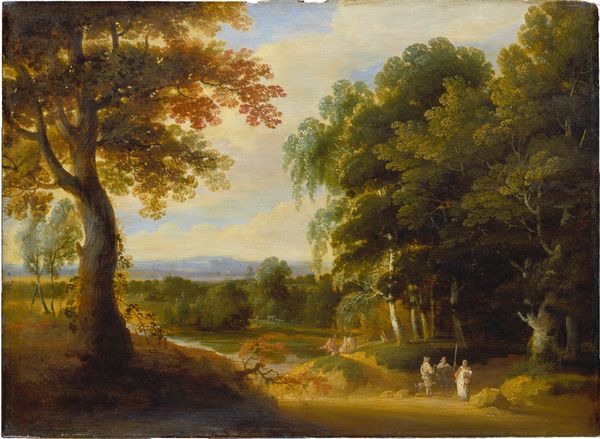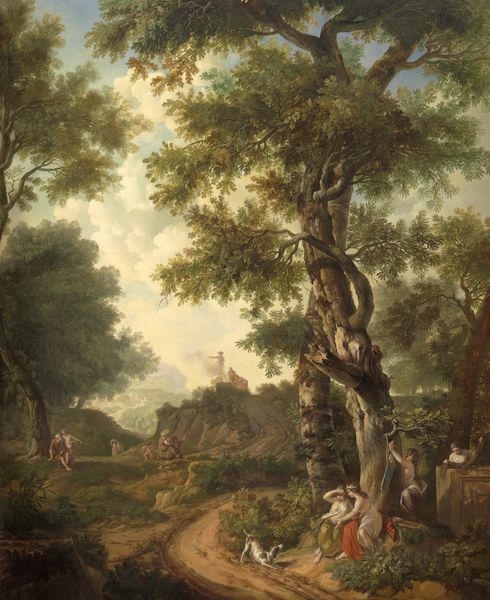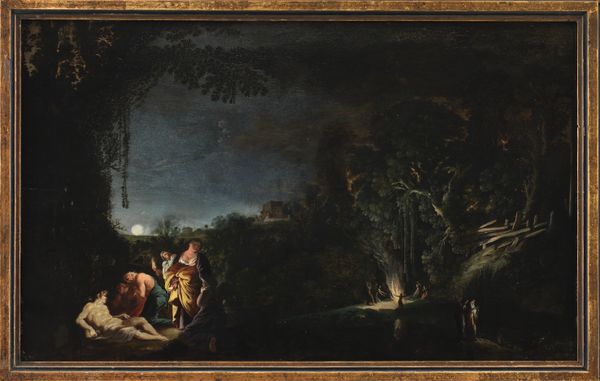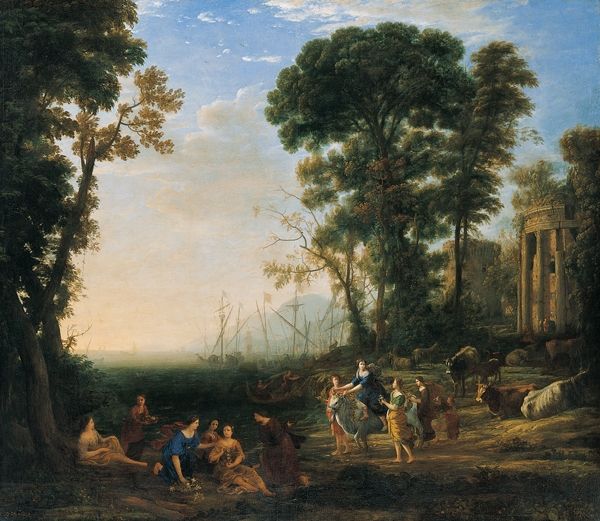
painting, oil-paint
#
allegory
#
baroque
#
painting
#
oil-paint
#
landscape
#
figuration
#
oil painting
#
academic-art
Dimensions: height 180 cm, width 156 cm, depth 5.7 cm
Copyright: Rijks Museum: Open Domain
Johannes Glauber’s ‘Arcadian Landscape’ presents a scene imbued with classical longing, painted in the late 17th or early 18th century. The statue of a draped figure stands as a focal point for veneration. The act of kneeling and offering before the statue, set within an idealized pastoral setting, draws upon ancient Roman traditions of reverence for deities and the natural world. This gesture echoes through centuries, from the Egyptian pharaohs to medieval Christian iconography, where supplication signals the divine. The landscape itself, with its rolling hills and serene skies, harkens back to the classical ideal of Arcadia, a mythical place of idyllic harmony. Note how Glauber uses light and shadow to create a sense of depth and mystery, inviting the viewer to enter into this timeless realm. The human psyche is drawn to the symbols, motifs, and gestures that repeat across history. They are a powerful force engaging us on a deep, subconscious level. This longing for a lost golden age connects us to the past and continues to resurface, evolving and taking on new meanings in different contexts.
Comments
No comments
Be the first to comment and join the conversation on the ultimate creative platform.

